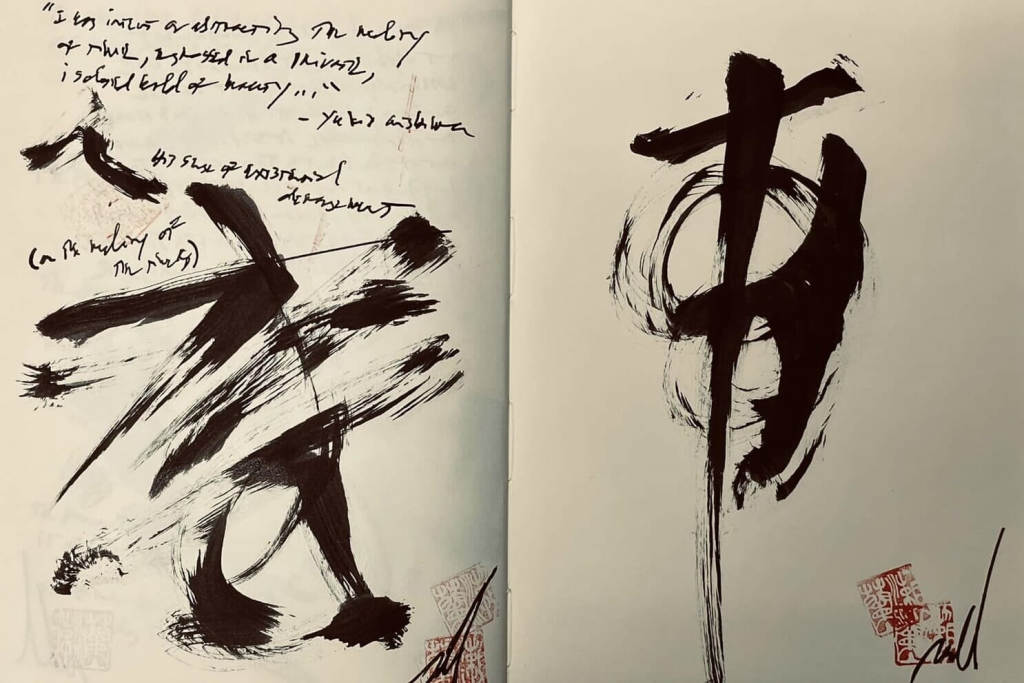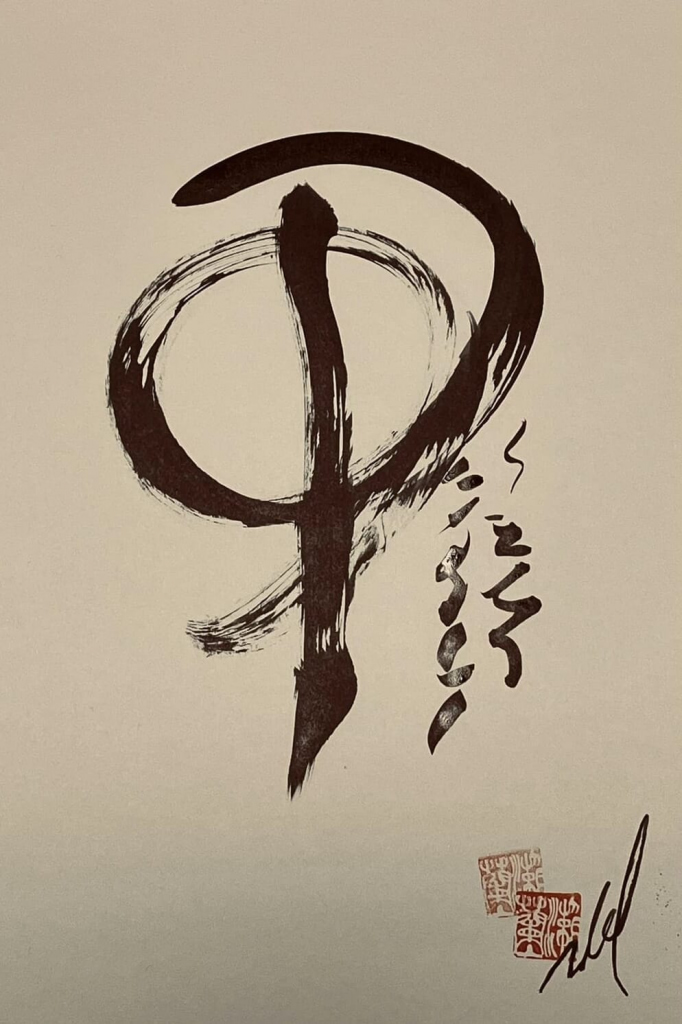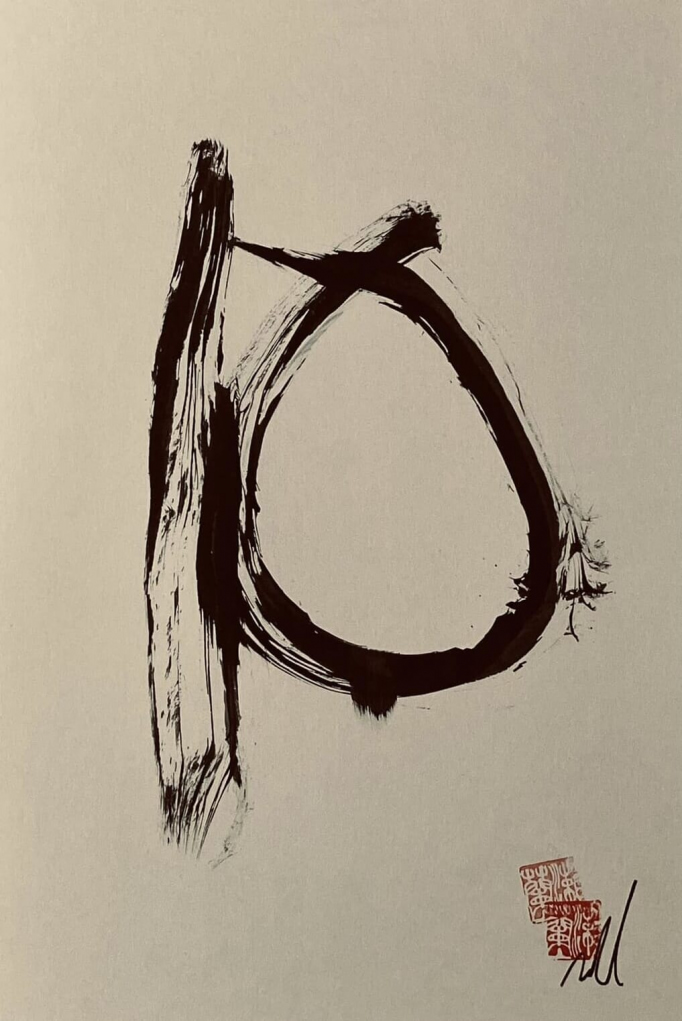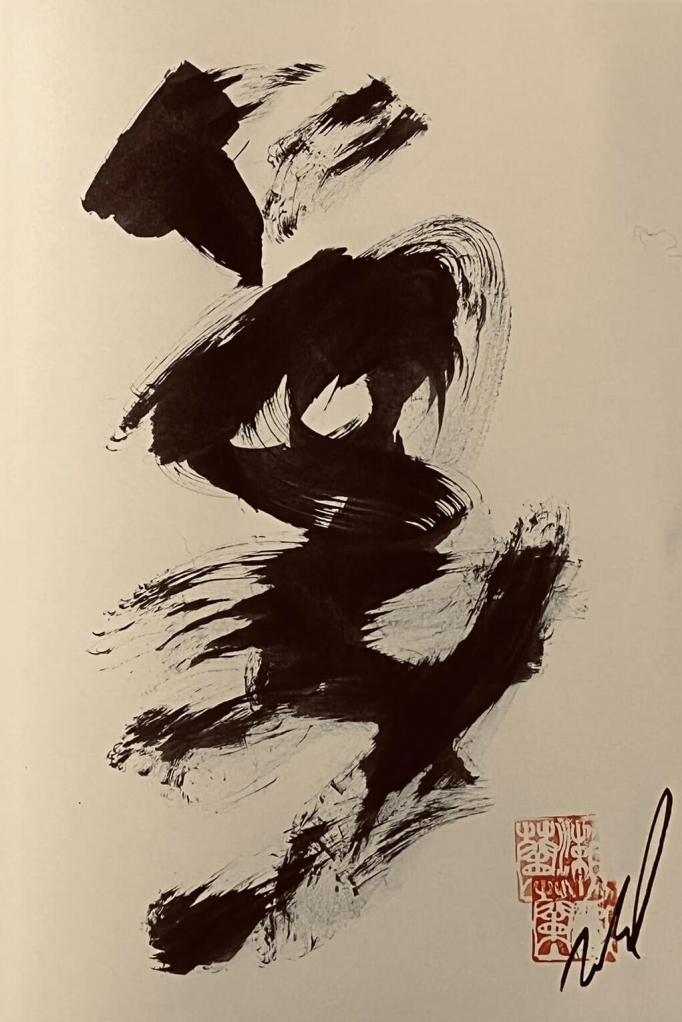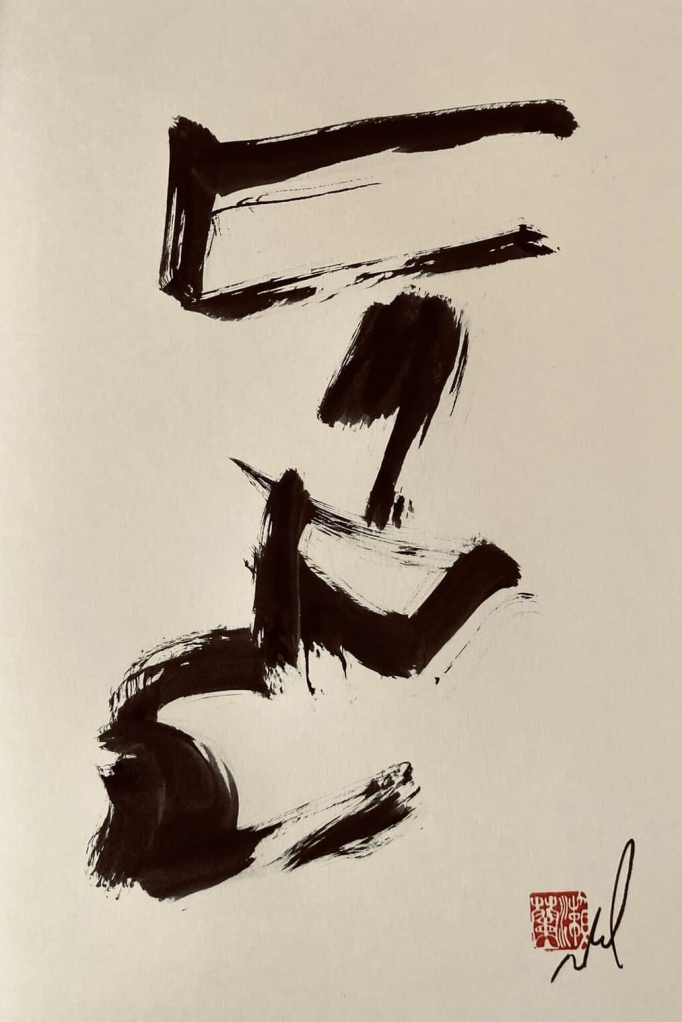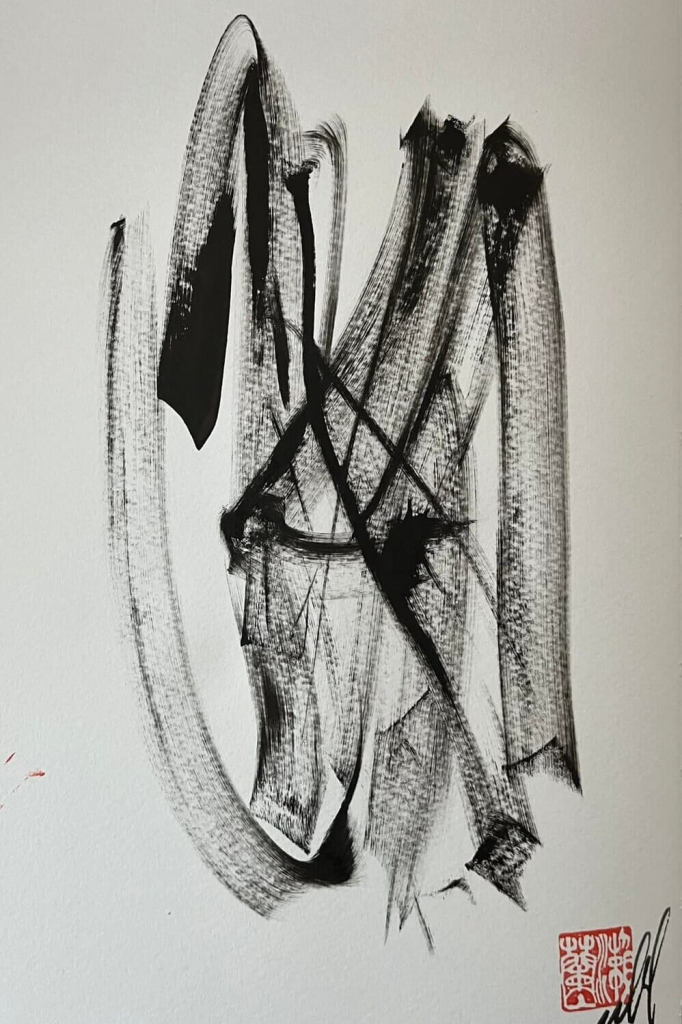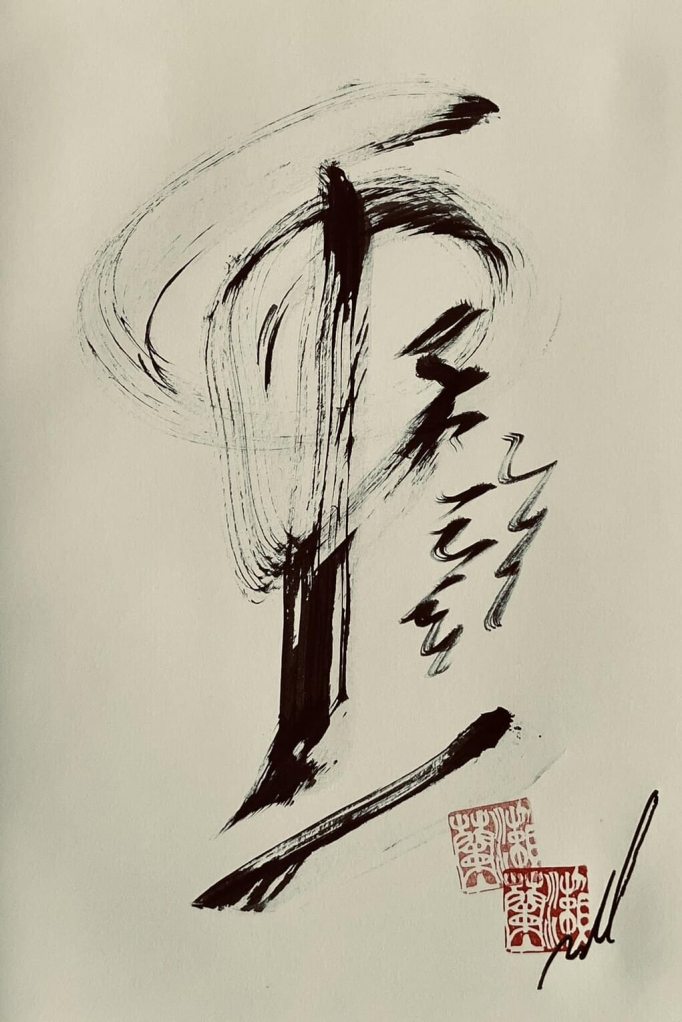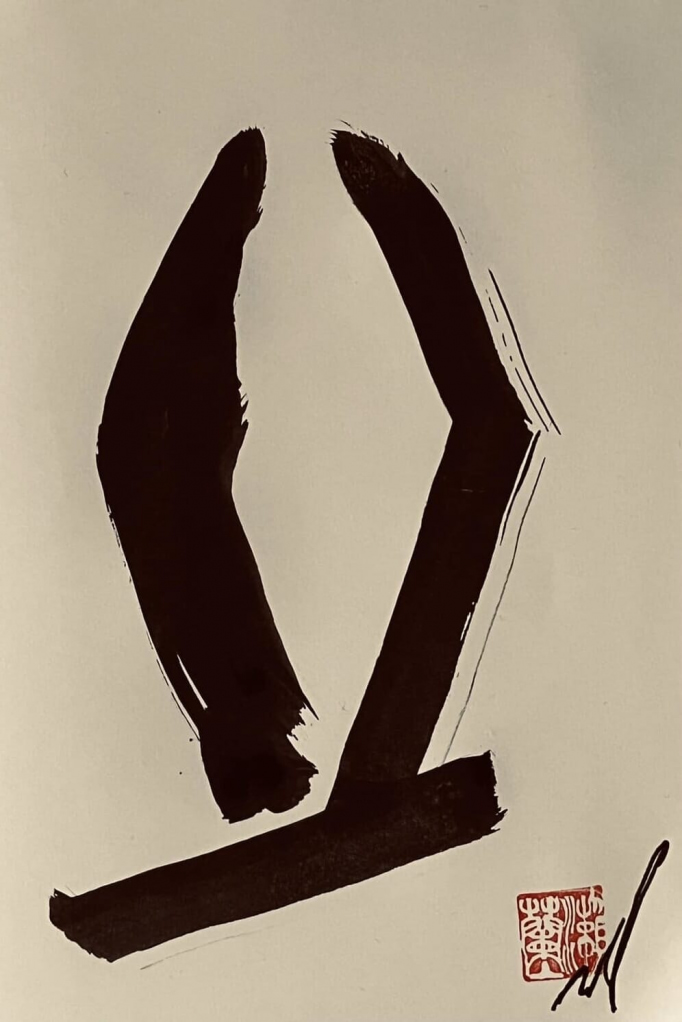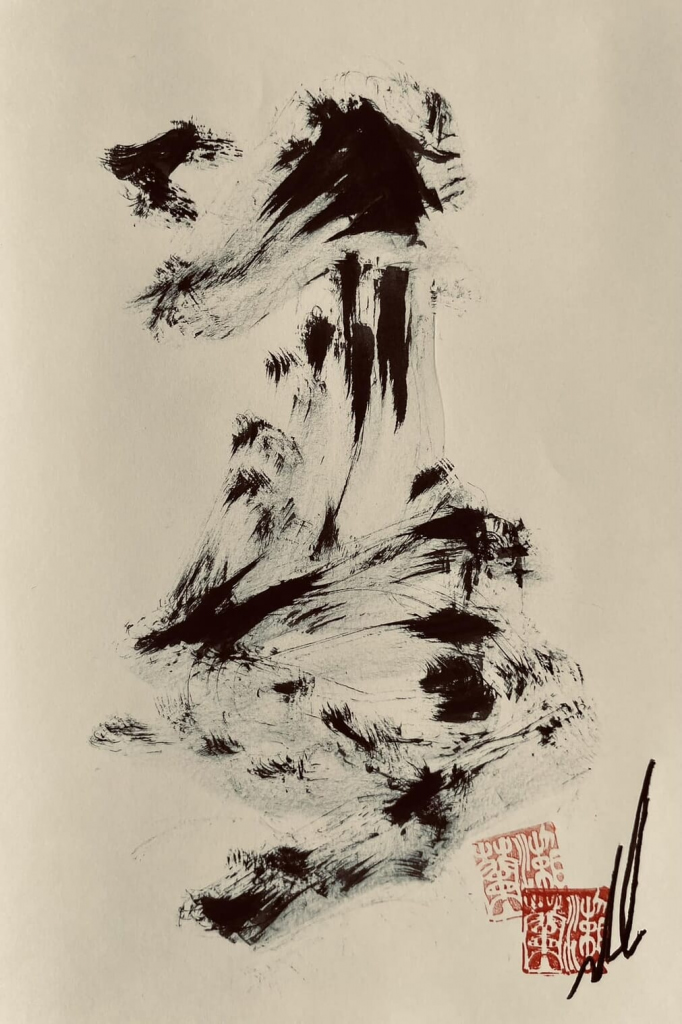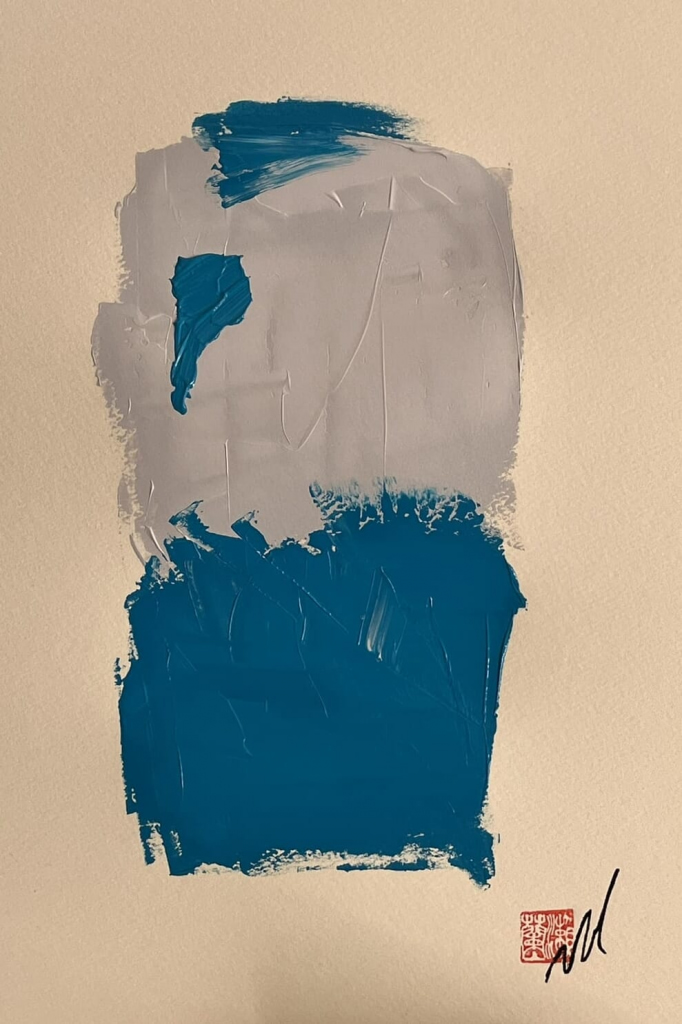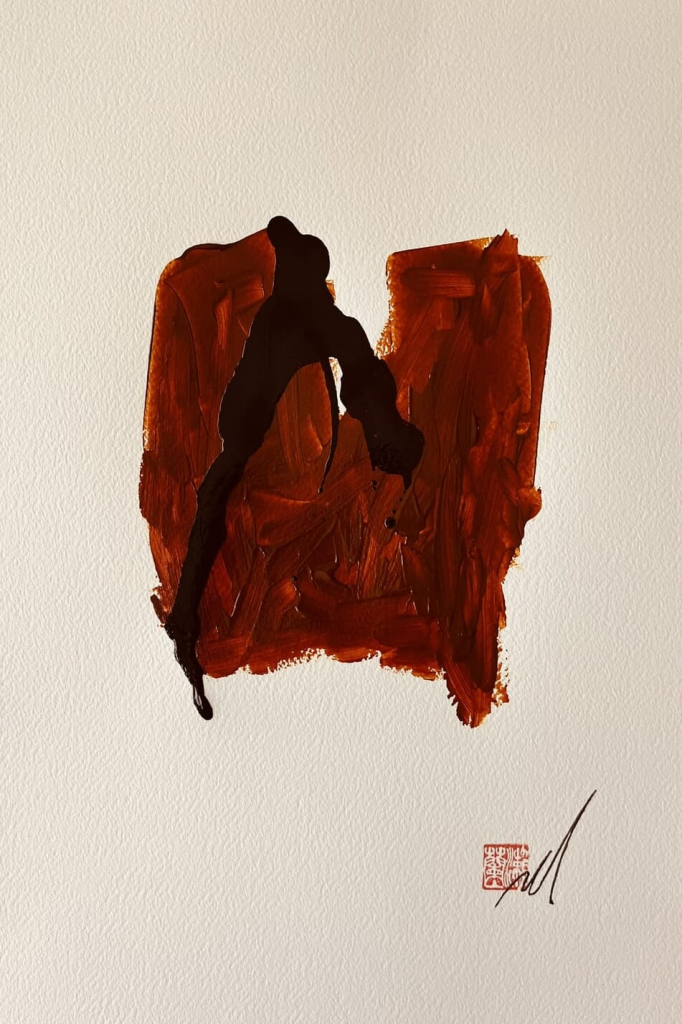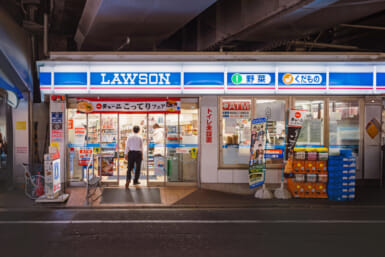Tokyo Weekender’s series TW Creatives features various works by Japan-based writers, photographers, videographers, illustrators and other creatives in a bid to provide one additional platform for them to exhibit their talent. The works submitted here belong entirely to the creators. TW only takes pride in being one of their most passionate supporters. This time, we introduce the calligraphy of poet and translator Eric Selland.
Calligraphy is a creative romance where writing and painting come to meet. In the calligraphy notebooks of poet Eric Selland that story happens in a new fresh way. Ink pen and ink brush play the main roles. The former is for writing thoughts, quotes, philosophy and journal entries, while the latter is for the ink paintings of asemic kanji characters. They share the space and intertwine, but also deconstruct calligraphy and play with the absence of meaning behind the kanji-like characters.
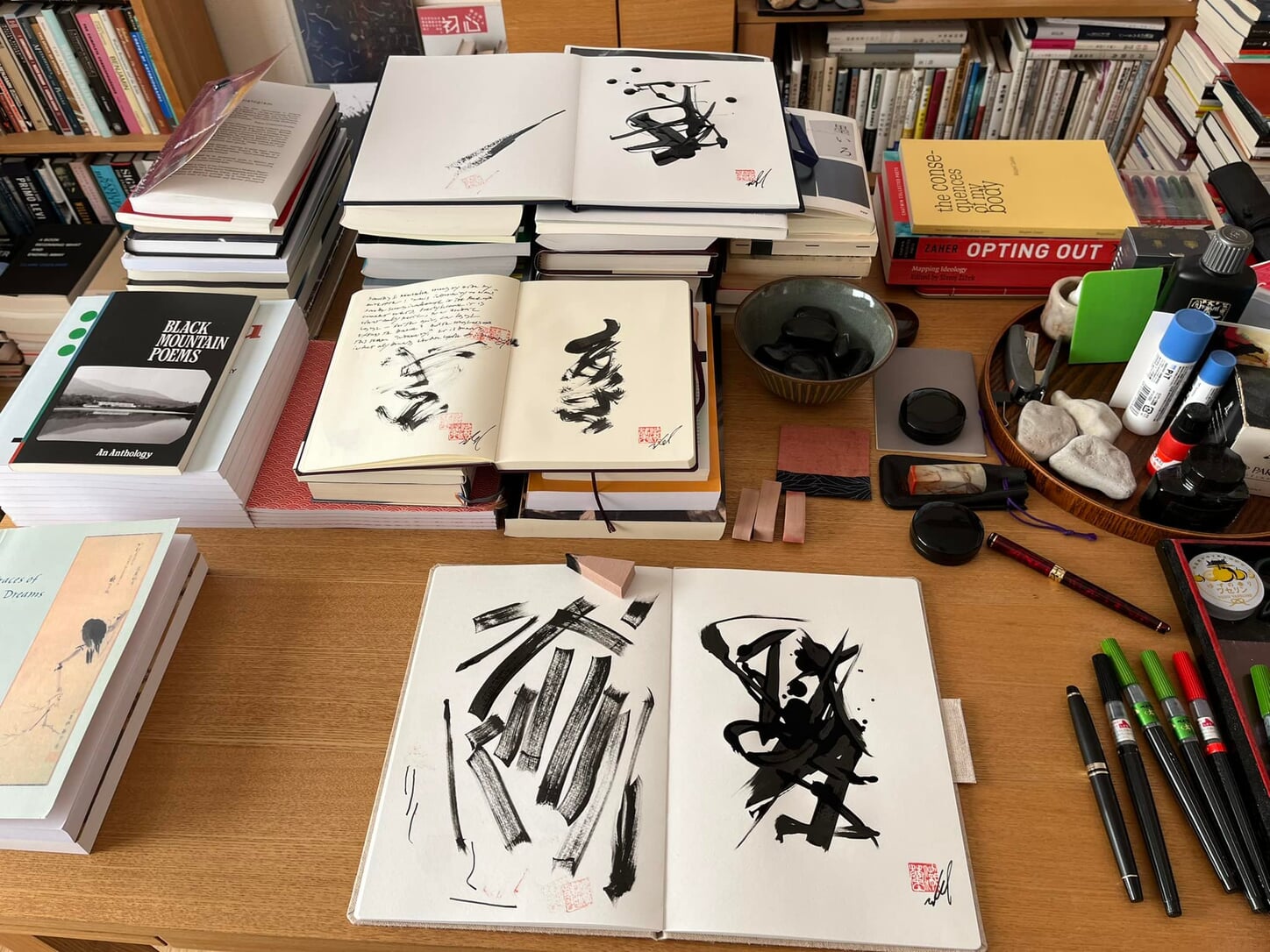
The Beginnings
Selland’s foray into calligraphy and painting has been slowly unfolding for years. He grew up with Japanese and Chinese art around him. Then, he was trained in calligraphy in college when he studied Japanese language and culture.
“I think it just came naturally when I began to find the need to make my work in poetry more physical or concrete, moving from the more common poet’s notebook into something more like notebook art,” Selland says.
Chinese characters are inherently visual, combining art and writing in every single word. Selland has also always been interested in visual or concrete poetry and the visual nature of language.
“Calligraphy is a way to be visual, to paint, and yet at the same time to retain a relationship to the word and to writing. And it represents that point where language gradually becomes abstract,” he says.
The Poetry in the Process
Selland’s calligraphy work flows from page to page, from notebook to notebook, intertwined with journaling. Although most of his ink paintings can be singled out from the notebook, the poet maintains that they are fragments of a process and the notebooks as a whole are the ever-evolving artwork. That is why he has, thus far, abstained from naming any aspect of this poetry-art project.
“In the context of the notebook, the brushwork is part of the poetic process. It’s not something separate from writing or poetry, but since it is not as intellectualized as the writing that it appears aside it allows for something more spontaneous and expressive on a level that transcends language as we usually understand it. In some of the works I sense almost a kind of violence — there’s a need to break out of the restrictions that can be set by language and various aspects of life. The paintings allow me to kind of “explode” and let it all out. In some of the images, I include my handwriting in English with the calligraphy so that the two merge with or grow out of one another,” the poet explains.
Art, Jazz and Freedom
At the same time, he shares that it’s all about listening to what the paper, the brush and the ink want. There is a certain resistance if the artist tries to force a preconceived vision. Similarly to a meditative practice or jazz improvisations, it’s all about being present and flexible in the process of creation. If ink starts running out, he will use that as a tool, painting with the very absence of ink, relishing in the strokes that leave calligraphy deconstructed.
Selland shares that he is in fact inspired by jazz as well as abstract art.
“I’m fascinated with the art of the 1950s when Japanese calligraphers began to do abstract painting based on calligraphy and some of the major abstract expressionist painters in New York began to do black paintings with obvious influences from Japanese calligraphy,” Selland says.
Aside from the asemic calligraphy notebooks, Selland has also been doing individual abstract paintings, experimenting with more color. He’s planning to exhibit his work and is looking for a gallery to represent him.
Selland is also in the early stages of preparing a book of his calligraphy notebooks for publication.
You can see more of his work and contact him via Facebook.
Eric Selland has been translating modernist and contemporary Japanese poets for nearly 40 years. He has published six books of his own poetry, including Arc Tangent and Beethoven’s Dream, both on Isobar Press. Eric’s translation of The Guest Cat, a novel by Takashi Hiraide, was on the New York Times Bestseller list in February of 2014 and his translation of poems by Kiwao Nomura, The Day Laid Bare, was chosen as a recommended translation by The Poetry Book Society, UK. His most recently published poetry translation is Kusudama, by Minoru Yoshioka (Isobar Press, 2021). He is a co-editor with Sawako Nakayasu on the New Directions Anthology of 20th Century Japanese Poetry expected to become available in 2024.

